Our gay guide to Argentina includes the country's top gay events, parties, things to do, gay tours, and practical safety tips to help you plan a fab and safe gaycation.
We love Argentina. It's got it all: hot guys, delicious food, loads of cute boys, stunning scenery, a huge diversity of wildlife…and did we mention it has the hottest guys on the planet…?!!
Above all else, Argentina is one of the most gay-friendly countries in Latin America and in our opinion, one of the most gay-friendly in the world. It's a very easy country for gay travelers to explore, with many top not-to-miss highlights to check out. Most of the big cities also have fun gay scenes, particularly Buenos Aires, which has one of the best on the continent.

During our big trip in Latin America, we traveled at length around Argentina, all the way from the Iguazu Falls in the north right down to the Patagonian tip at the other end. Based on our first-hand experience, we've put together our comprehensive country guide to Argentina for gay travelers to help inspire your trip here.
If you're planning on heading further south from Argentina, you'll no doubt want to check out our gay Antarctica adventure blog!
Heads up: We just wanted to let you know that this post contains affiliate links. That means if you book something through one of those links, we'll get a small commission, at no extra cost to you. It helps us keep our blog going – so thank you in advance for your support! ♥
Gay rights in Argentina
Despite the strong influence of the Catholic Church, Argentina has one of the most progressive LGBTQ rights in the world. Homosexuality was legalised back in 1887 and in 2010 it became the first country in South America to legalize same-sex marriage, which included adoption rights. Argentina is also one of the most trans-friendly countries in the world, allowing you to change your legal gender without having to undergo hormone therapy, surgery or any psychiatric diagnosis. Rosario, in particular, is famous for being a trans person haven in Argentina.
With regards to the army, gay men and lesbians have been allowed to openly serve since 2009. Sadly, the same law does not (yet) apply for transgender people. Finally, whilst anti-discrimination laws are lacking across parts of Argentina, Rosario and Buenos Aires have their own in place. However, in 2012, legislation was introduced adding life imprisonment to hate crimes based on sexual orientation, gender identity or expression.
In terms of gay life in Argentina, it is generally quite easy, especially if you live in the big cities. In the Pew Global 2013 study (which asked society if homosexuality should be accepted) Argentina had the highest score in Latin America of 74%, which was also one of the highest from all the countries involved in this survey. To find out more, read our interview with local boy Juanjo from Buenos Aires about gay life in Argentina.
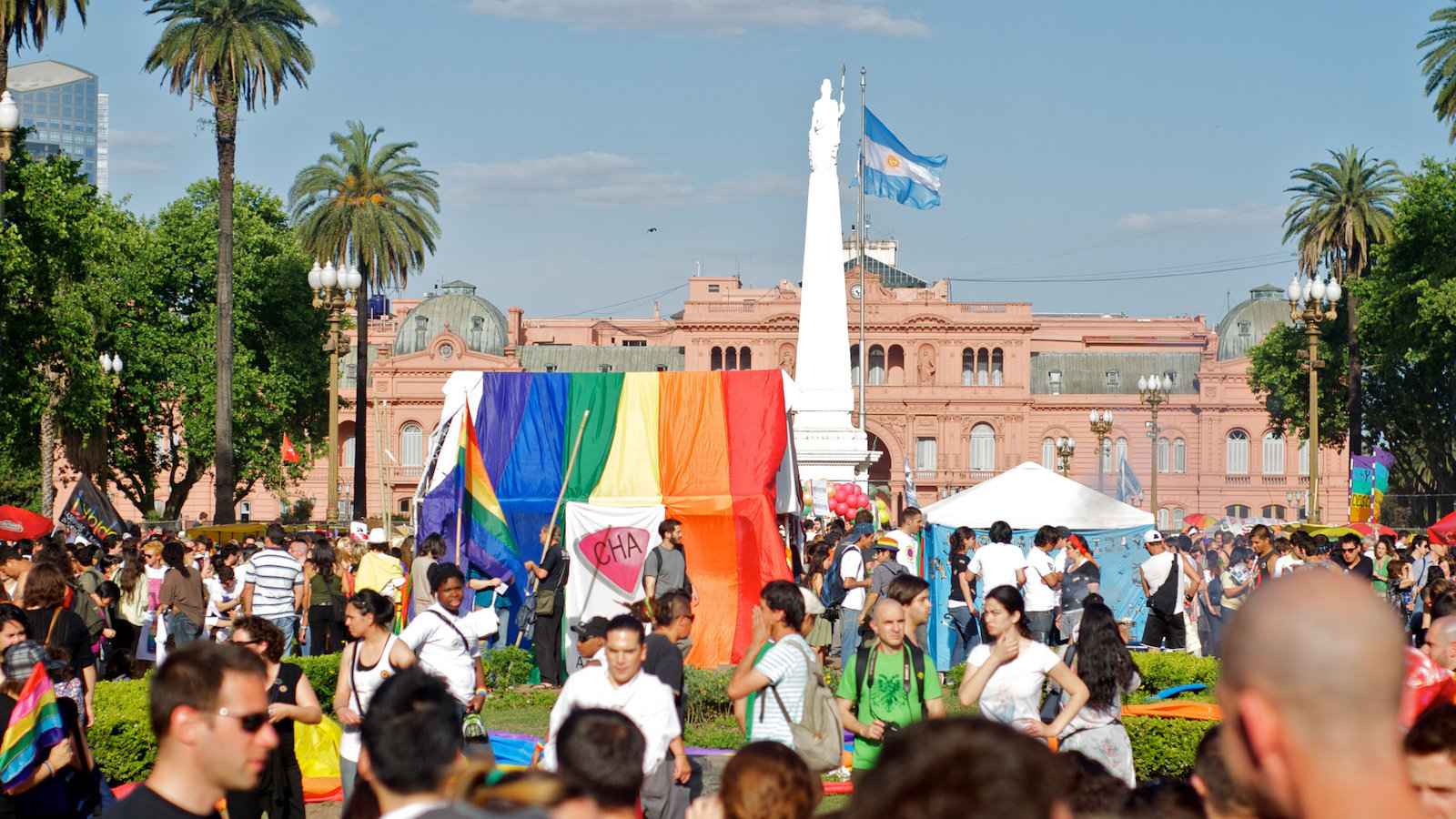
Is Argentina safe for gay travelers?
We found Argentina to be a wonderful gay-friendly destination. Argentinians are a very friendly and passionate bunch. You'll quickly make friends with them – they love meeting foreigners.
We felt safe travelling as a gay couple in Argentina. There are some parts we wouldn't go wandering around in, for example, parts of the La Boca neighbourhood in Buenos Aires – but this applies to everyone, straight or gay.
In terms of getting a double bed in hotels, guesthouses and Airbnb bookings, this was never an issue for us. All the places we stayed at in Argentina welcomed us as a gay couple, especially the large international brands.
There is a thriving gay scene in Buenos Aires, with many bars, clubs and even a few gay milongas (tango halls). Outside of the big capital, there are gay scenes in the big cities like Córdoba, Mendoza, Puerto Madryn and Rosario, with even a gay grape harvesting festival (“Vendimia para todos”) taking place in Mendoza in February/March.
As with most countries in the world, there will always exist an element of homophobia, particularly in rural communities. This is particularly true in Argentina where a “machismo” attitude is prevalent. If heading outside of the big cities, you should take care and be wary of homophobic attitudes that may exist.
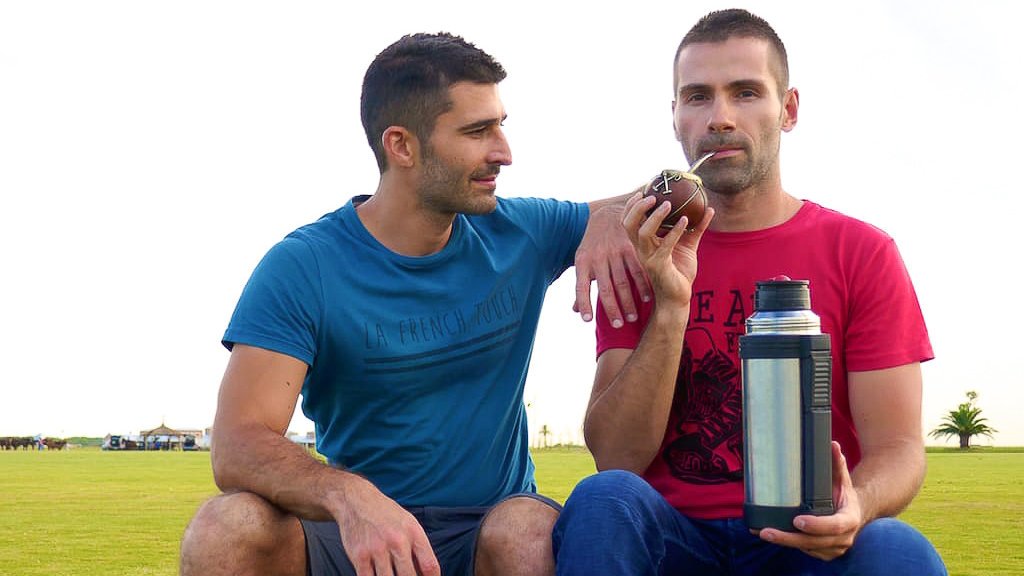
Top gay-friendly cities in Argentina
Most of the big cities in Argentina have a gay scene, especially the big capital, Buenos Aires. Here we've put together a few of the best gay-friendly cities in Argentina to give you a flavour of what to expect:
Buenos Aires
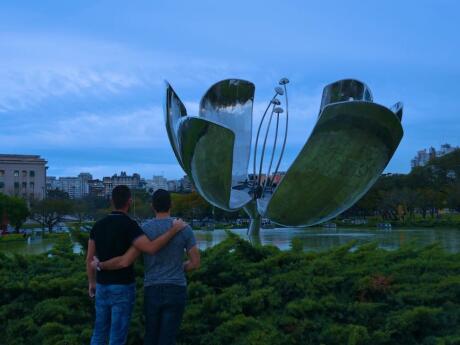
We love Buenos Aires! Argentina's vibrant capital city has a large range of really fun gay bars and clubs to suit everyone, particularly around Palermo and Recoleta. The capital also has some queer tango “milongas” (tango halls), which is a great way to learn more about this famous dance and to make like-minded friends with both locals and foreigners. Buenos Aires is also famous for having the best parillas (steak houses) in the country. Check out all our favourite gay bars, clubs, hotels, parillas, queer tango halls and more in our full gay guide to Buenos Aires.
Mendoza
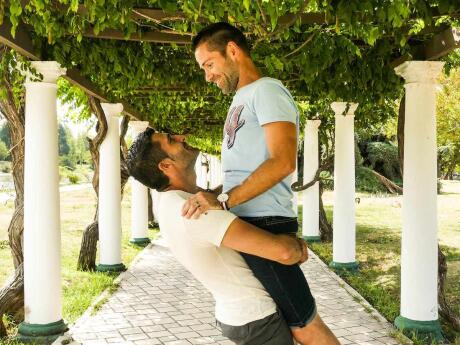
Mendoza is where some of the best wines in the world are produced, in particular, Malbec. The most famous bodegas (wineries) are located here, which you can visit for wine tastings. Some of the best boutique hotels in Mendoza are also located within or next to a bodega and make the perfect base to explore the area. The best time to visit is towards the end of the Argentinian summer in February/early March, when the vendimia (wine harvesting) festivals are taking place. Look out for the LGBTQ Vendimia festival during this time as well, which is a lot of fun! For more, check out our gay guide to Mendoza.
Córdoba
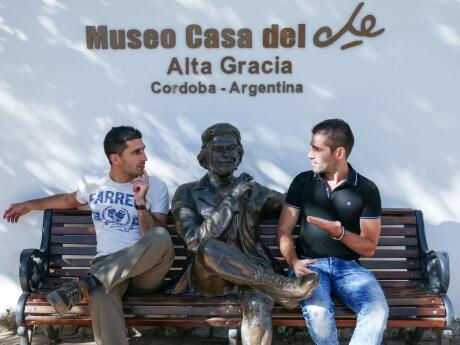
Córdoba is located right in the heart of the country. It is famous for being a young city, with students making up 20% of its 1.4 million residents, and where Che Guevara grew up. As well as having a small gay scene in the Güemes neighborhood, it is surrounded by picturesque valleys and mountains, called the Sierras de Córdoba, best explored as a road trip. Highlights include trekking in Los Terrones National Park and spotting condors at the Quebrada del Condorito National Park. Córdoba can be visited throughout the year. For more info, read our gay guide to Córdoba.
Rosario
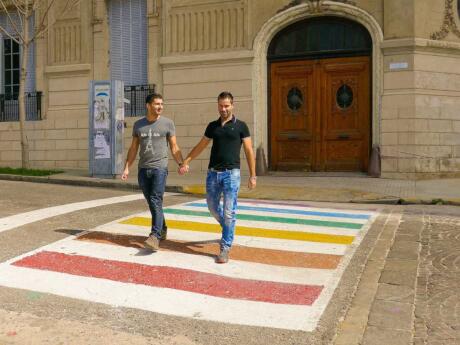
Located about 300km northwest of Buenos Aires, you will find Rosario on the banks of the Paraná River. Rosario has also been long known as a sort of gay haven, with the residents being very relaxed and tolerant of all. Rosario is famous for being the birthplace of both Che Guevara and Lionel Messi, but it's also renowned for having the best ice cream in the world (outside of Italy)! There are some great gay bars and clubs, as well as gay-friendly restaurants. Summer in Rosario (December to February) is a lovely time to visit. Read our full gay guide to Rosario here.
Puerto Madryn
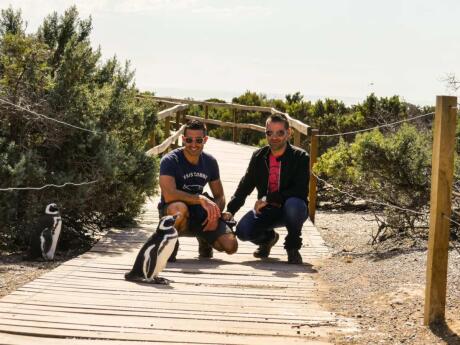
Puerto Madryn is located in the Chubut region of Patagonia and is an excellent base for some of the best wildlife and nature experiences in Patagonia. Puerto Madryn is also famous for introducing the Casamiento Express for LGBTQ couples, where all nationalities can get married in just 5 days. There is so much to do in Puerto Madryn, from seeing penguins, elephant seals, and whales, to snorkeling with sea lions. There's also a small, fun gay scene, particularly around the beachfront promenade of “La Rambla”. For more, check out our gay guide to Puerto Madryn.
Pride and gay events in Argentina
Most of Argentina's big cities hold pride events which include days of parties leading up to an incredible pride parade of color and noise. Carnival is also widely celebrated and often features plenty of opportunities for fabulousness. The majority of gay events take place in Buenos Aires, but there are others taking place across the country. These are the most exciting gay events which take place throughout Argentina:
Buenos Aires Gay Pride – November
Buenos Aires' pride parade (or Marcha del Orgullo) is one of the largest and best gay pride events in the whole of South America. It attracts around 200,000 people to the city, which becomes one huge, fantastic street party.
Córdoba Gay Pride – November
Córdoba also hosts a wonderful gay pride march that runs throughout the streets of the city. There are also lots of events and parties taking place in local hotspots during this period, so it's definitely a great time to visit.
Vendimia Para Todos in Mendoza – February/March
Mendoza holds a massive grape harvesting festival in February/March, which even has a dedicated LGBTQ section called ‘Vendimia for everyone'. It's an entire week filled with events, parties, and festivities, which climaxes on the final day's concert and parade. Vendimia Para Todos is the largest gay event in Argentina after the Buenos Aires Pride.
Queer Tango Festival in Buenos Aires – November
The International Festival of Queer Tango has been going strong in Buenos Aires since 2006. This five-day event sees performances, lessons, and numerous workshops taking place in locations throughout the city. If you're in BA during November, we highly recommend checking this out!
Asterisco Film Festival in Buenos Aires – November
November is a busy time in Buenos Aires since most gay events coincide with the pride period. The Asterisco Festival is an international LGBTQ film festival, showcasing the best films about sexual diversity.
BAGFest in Buenos Aires – November
Another great event in Buenos Aires during the pride festival is BAGFest, aka Buenos Aires Gay Festival. BAGFest is a two-day clubbing circuit in November, although they also host lots of other parties and events throughout the year. If you're visiting Buenos Aires for Pride, then BAGFest is where you can dance the night away with lots of topless sexy local boys afterward…!
Carnival in Buenos Aires, Córdoba and Rosario – February/March
Carnival celebrations take place in most places in Argentina usually in mid/end Feb and early March. If you're going to be in Argentina around this time, make sure you check out the local parties and get your butt to a Carnival parade!
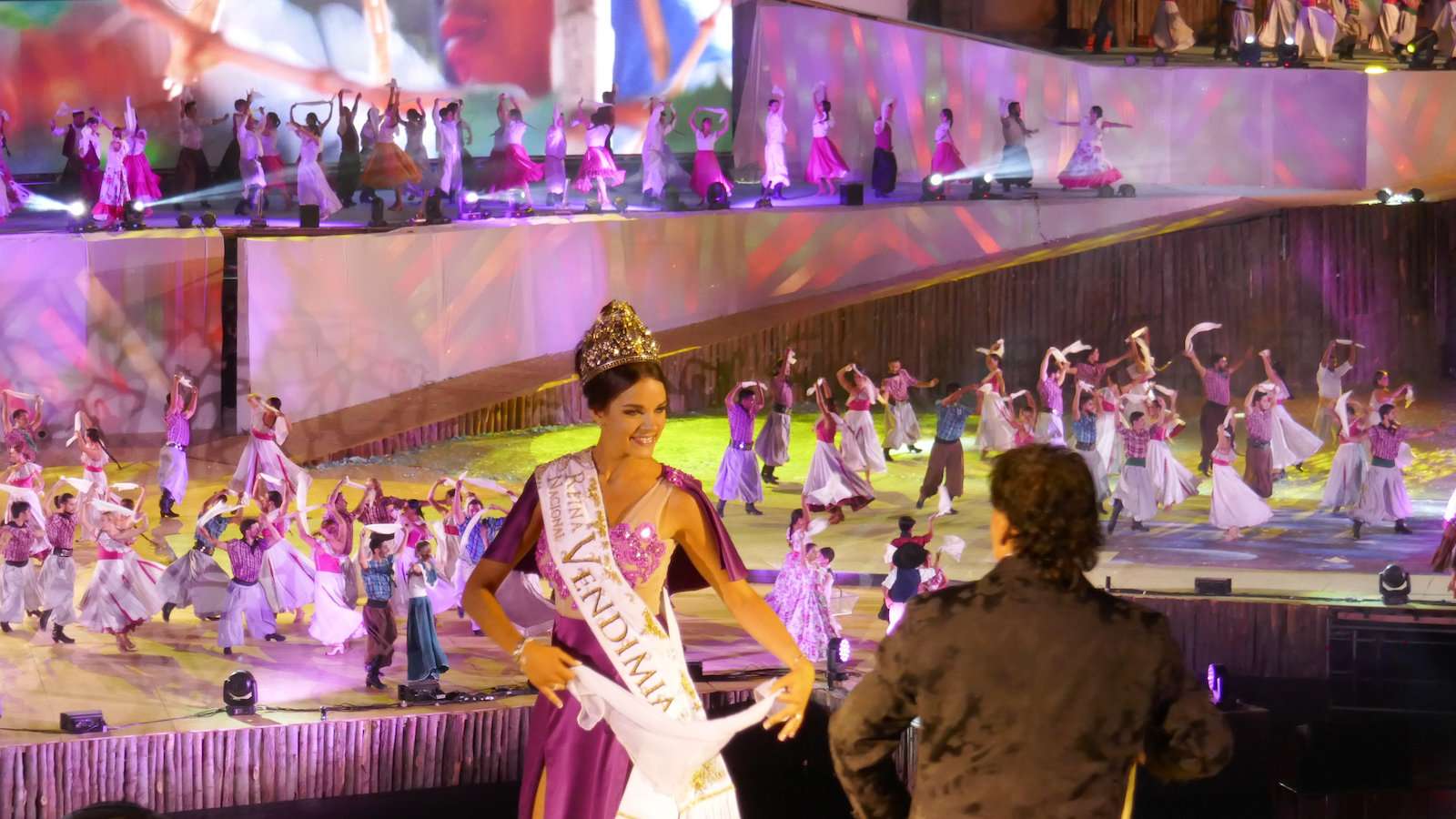
Gay tours of Argentina
If you like to explore a new destination as part of a group, there are a number of excellent gay and gay-friendly tours operating in Argentina. By joining a tour group you'll be able to relax and enjoy everything without worrying about logistics. You'll also be able to make friends with like-minded people so it's ideal if traveling by yourself.
1. Argentina Heart and Soul with HE Travel
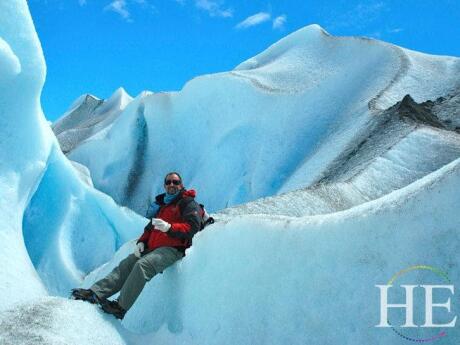
For a gay trip that's a mix of both culture and incredible natural sights, we recommend HE Travel's Argentina Heart and Soul tour. You'll be able to spend 10 amazing days exploring the country, which includes the bustling fabulous Buenos Aires, the Perito Moreno Glacier, trekking in El Chaltén, and visiting Ushuaia. This tour includes moderate activities such as hiking mountains and glaciers, as well as sailing on a glacial lake. You can even add on an extra 4-night pre-tour to visit the spectacular Iguazu Falls! The main tour both starts and ends in Buenos Aires, so it's the perfect way to get a taste of this magnificent country.
He Travel is offering our readers an exclusive 5% discount valid for their Argentina Heart and Soul tour.
2. Antarctica Adventure and Gay Cruise with HE Travel
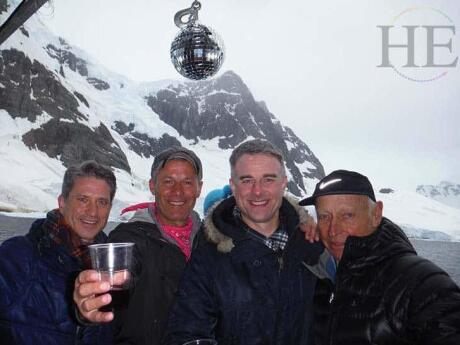
We're big fans of HE Travel. Not only do they offer excellent gay tours, but you can even explore ANTARCTICA with them! This incredible cruise tour runs for ten whole days. They depart from Ushuaia, the southernmost city in the world which is located on the very tip of Argentina. The cruise ship then sails down through the Beagle Channel and Drake Passage before reaching the mainland of Antarctica. You'll get to see all sorts of wildlife like whales, seals, and penguins, on what has got to be one of the trips of a lifetime. You'll be traveling with a friendly group of fellow LGBTQ travelers aboard a 160-passenger ship.
He Travel is offering our readers an exclusive 5% discount valid for their Adventure and Antartica gay cruise.
3. Buenos Aires and Mendoza with Ursula Hosting
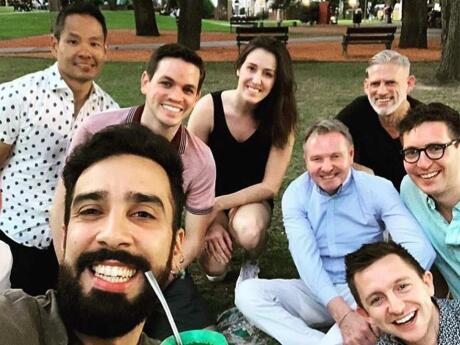
Join this gay group tour to Buenos Aires and Mendoza which takes place over five days from the end of November to the beginning of December. Ursula Hosting offers an inclusive environment in which to explore unique destinations. They offer a hosted experience in Buenos Aires, with the option to add on an additional few days in Mendoza as well. This is a great way to get a taste of Buenos Aires, particularly by exploring the more local spots away from the tourist crowds. It's also usually timed to coincide with the American Thanksgiving, so you'll get a chance to celebrate this holiday Argentinean-style with your new friends!
Ursula Hosting is offering our readers an exclusive 5% discount valid for their gay hosted tour of Buenos Aires and Mendoza.
4. Argentina and Chile Gay Tour with Outgoing Adventures
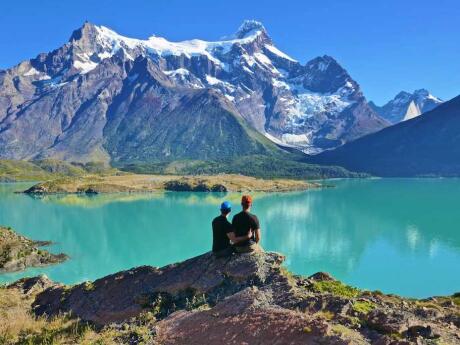
If you want to explore the best that both Argentina and Chile have to offer then Outgoing Adventures offers a ‘Gay Tour to the End of the World‘. This epic two-week tour includes days spent exploring Buenos Aires, before heading to the Bariloche region and crossing over into Chile to visit Puerto Varas. There'll be plenty of opportunities for hiking in the Torres del Paine National Park and on the Perito Merino Glacier, as well as time to socialize with all your new gay friends. You can also choose to do this tour on multiple dates throughout the year, usually in November or March.
5. Argentina to Antarctica Gay Cruise with Out Adventures
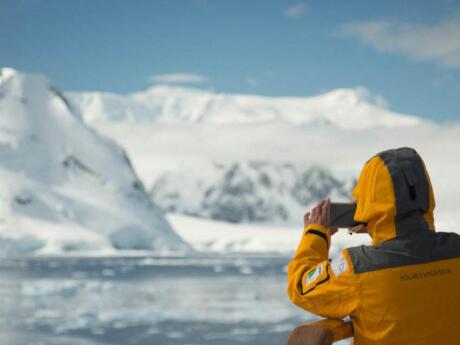
Have you always dreamed of stepping foot on the ice-bound continent of Antarctica? With Out Adventures, you can cruise from Ushuaia in Argentina all along the Antarctic peninsula with a group of other friendly gay travelers. Their Gay Cruise Antarctica takes place on a larger cruise ship, but there are exclusive events onboard for the LGBT group, as well as the opportunity to take a ‘polar plunge' or trek through the snowy landscape. This cruise doesn't take place every year but keep an eye on the Out Adventures homepage for when you can join the next one!
Gay travel agents in Argentina
If you don't like to travel with strangers, or you would like to plan a trip for your own group, Ursula Hosting is the best gay travel agent we found in Argentina. They offer tailor-made and bespoke luxury gay tours in Buenos Aires, Mendoza, and the rest of the country. They'll take care of all the minutiae of your trip, making it effortless for you.
We've negotiated with Ursula Hosting an exclusive 5% discount for our readers on all their services, giving you the luxury of being able to delegate all the travel planning of your trip to them.
Fill out the form below to get a free quote from Ursula hosting and benefit from a 5% discount:
I WANT A PERSONALISED ITINERARY
Fill out this form to get a personalized itinerary and get an exclusive 5% discount for your trip to Buenos Aires and the rest of Argentina.
You can also contact Ursula Hosting directly, but don't forget to mention the promo code NomadicUH5 to get a 5% discount.
Gay marriage in Argentina
In 2010, gay marriage was legalized in Argentina. Since then Argentina has become one of the most popular places for gay destination weddings.
Popular spots to get married in Argentina include Buenos Aires and Puerto Madryn – which was one of the first places in Argentina to introduce the Casamiento Express, an initiative open to all nationalities in which you can get married in just 5 days.
If you're looking to get married in Argentina, we highly recommend the services of GayMarriageArgentina, which specializes in arranging weddings for non-residents and tourists. They handle all the administrative aspects for you, submit the complete files to the judge and book the room for your wedding making it a complete worry-free process. Their wedding packages start from $2,550.
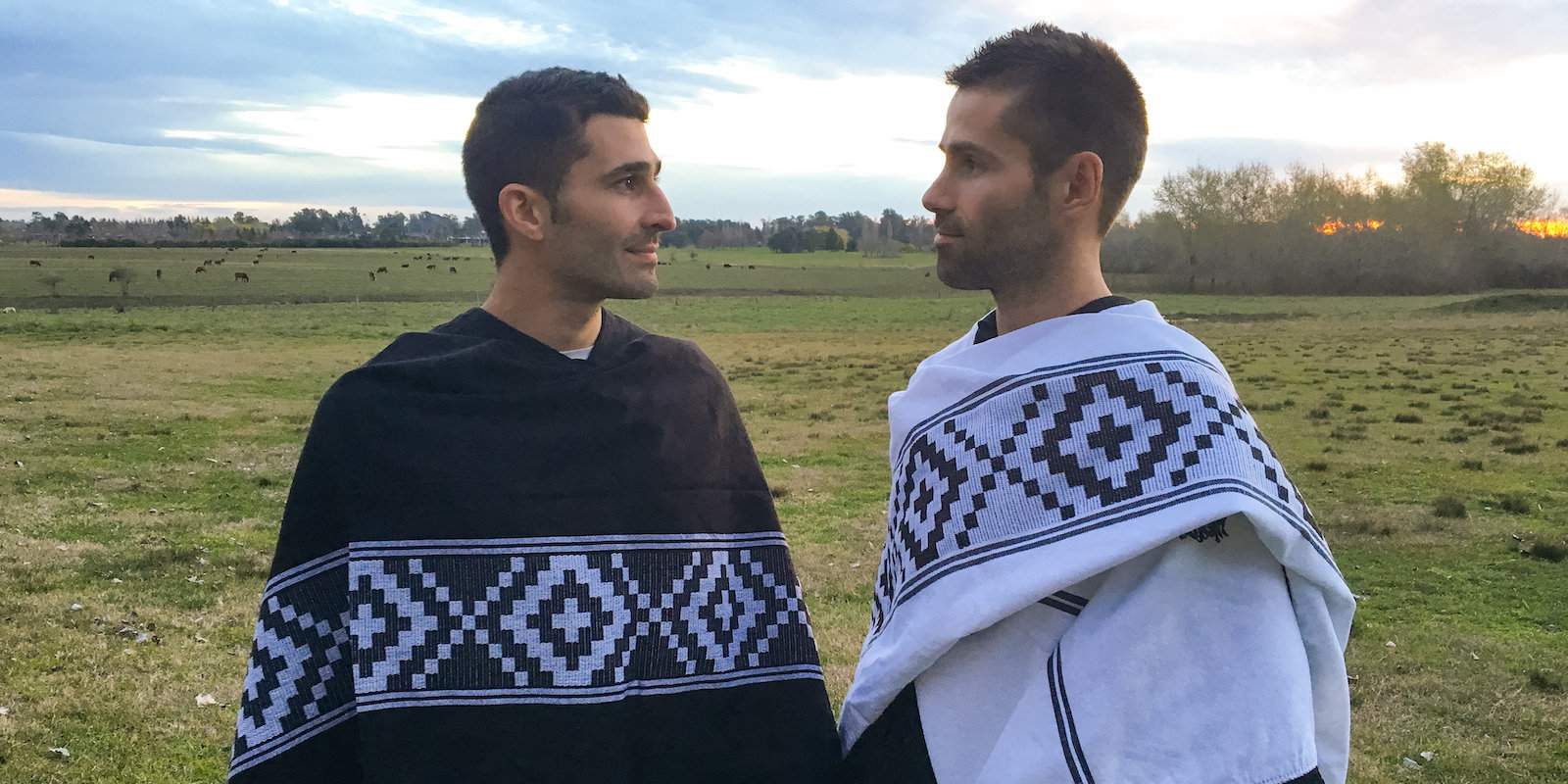
Top experiences in Argentina for gay travelers
There are so many incredible things to see and do in Argentina! We've worked very hard to narrow our favorites down for you, so here are our must-do experiences for gay travelers in Argentina. For more interesting info, be sure to check out our 10 interesting facts about Argentina.
Learn to dance tango

Did you know that the Tango originally started as a dance between two men? In the 1880s, men would practice Tango moves in the back alleys of Buenos Aires, so that they could impress the ladies. Same-sex Tango dancing got a little lost since then, until the early 2000s when a variety of queer milongas (tango clubs) opened up in Buenos Aires to cater to the LGBTQ community. Nowadays, if you want to learn to dance the Tango with your gay love, then you can take lessons (and see live performances) at gay Milongas such as Tango Queer and La Marshall. This is one of our favorite and most romantic experiences in Argentina we'll never forget!
Sample the wines of Mendoza
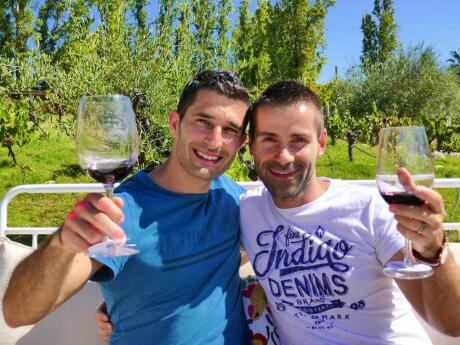
Most people visit Mendoza for the wine. This is no surprise given that Mendoza is famous for its Malbec and responsible for producing nearly 80% of the country's grapes.
There are many “bodegas” (wineries) spread around the region, which you can, and should, visit for wine-tasting tours.
Depending on where you are staying you might be able to hire bicycles and cycle between the different bodegas. Many of the Bodegas also have excellent restaurants so that you can pair some delicious wines with fine food.
Marvel at the thundering Iguazu Falls
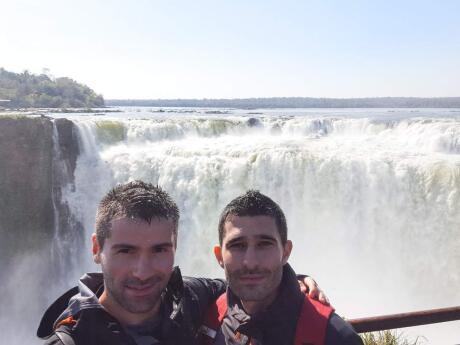
The Iguazu Falls are one of the most visited tourist attractions in Argentina and we love them. The Falls are located in Argentina’s Northeastern subtropical Misiones province, on the border with Paraguay and Brazil. It is hot and humid here for most of the year. It rains the most in December, January, and February, so some of the trails may be closed during these months, but the upside of this is the Falls will have a greater volume so will be more impressive. April to June is the dry season, so the best chance for clear, blue skies. Make sure you check out our full guide to visiting the Iguazu falls as well.
Explore the wetlands of Esteros del Iberá
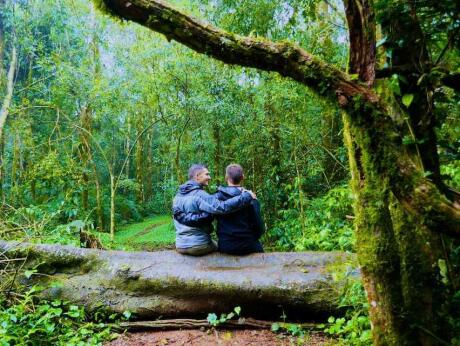
The Esteros del Iberá is the second-largest wetland in the world after the Pantanal in Brazil. It is located in the province of Corrientes in Northeast Argentina, covering over 5,200 square miles (13,700 square kilometers). This large wetland comprises a biologically diverse wilderness of still water lakes, marshland, lagoons, and islands, based largely around the Parana River. The area is also rich with wildlife with over 350 species of birds, monkeys, capybara (the world’s largest rodent) and caiman.
Hike Perito Moreno glacier
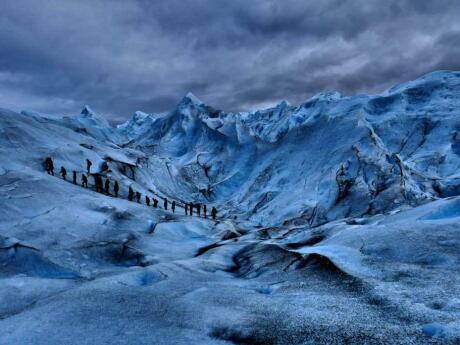
The Perito Moreno Glacier is, for us, one of the most incredible things we've seen during our travels. This huge ice formation is 35km (22 miles) in length – the size of Buenos Aires city, with a depth of up to 180m (590ft). You can hike across Perito Moreno as part of a tour, which we highly recommend. The peak time for tourism in Perito Moreno is during the Argentinian summer months of December to February, so the best time to visit when it's not so busy is in November or March. For more inspiration, check out our favorite highlights from Patagonia.
See the wildlife of Peninsula Valdes
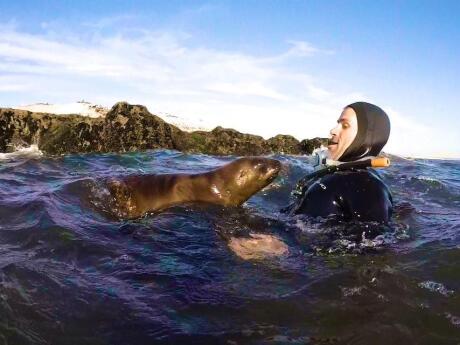
Near Puerto Madryn in Peninsula Valdes is a hotspot for seeing whales with their young. You can even see killer whales (orcas) here, particularly from January to April, and then in October-December when they come to feed on elephant seal pups. Find out more in our 5 tips for spotting orcas in Peninsula Valdes. You can also see the elephant seals and Magellanic Penguins if you go exploring the beaches of the peninsula. You can even get up close and personal with friendly sea lions if you join a snorkeling or scuba diving day trip!
Take in the impressive views of Mount Fitz Roy
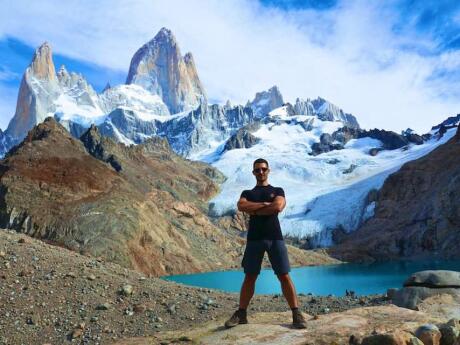
El Chaltén for us was the best of all our trekking experiences in Patagonia. El Chaltén itself is a small town in the Santa Cruz region of Argentina, close to the Chilean border. It is surrounded by many trails, which are easily accessible without a guide. The busiest season for El Chaltén is in December-February, so the best time to visit when it's not so crowded, but also not too cold, is November or March. One of the most popular treks in the full-day trek to Laguna de Los Tres, which has the most impressive views of the iconic Fitz Roy Mountain. We came here first before visiting Torres del Paine in Chile. Check out our guide comparing Torres del Paine and El Chaltén.
Visit the Los Alerces National Park in Chubut
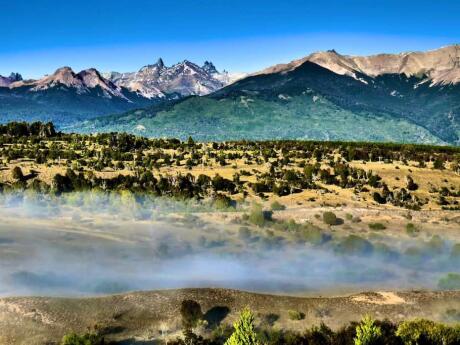
The small town of Esquel in the Chubut region of Argentina is the base for hiking trips to the UNESCO-listed Los Alerces, National Park. Here you can visit the second oldest living species on Earth: The Alerces Tree. The largest known Alerce tree in Argentina is 2,600 years old. This ancient species is only outlived by the Methuselah tree – a Great Basin Bristlecone Pine located in the White Mountains in California, which is almost 5,000 years old! Other highlights of Esquel include the fun La Tronchita railway train ride, visiting wineries, and seeing the Torrecillas glacier from a boat tour on Lake Menéndez.
Have afternoon tea in an authentic Welsh tea house

Argentina is home to some of the largest Welsh communities outside of Wales, especially in the Chubut region near Puerto Madryn. The Welsh settlers first arrived in 1865 and have over the years spread inland, creating settlements like Gaiman, Trevelin, and Trelew. We sought out several traditional teahouses for Welsh afternoon tea. We visited Nain Maggie in Trevelin and Ty Té Caerdydd in Gaiman – where Princess Diana famously had tea in 1996. Welsh tea features a variety of cakes and tarts, including the renowned torta negra (Welsh cake) made using recipes handed down by previous generations.
Play polo at a traditional Estancia

Estancias are the ranches where the Argentinian cowboys (called gauchos) used to herd their cattle. Today, most estancias have been converted into beautiful hotels, restaurants, and polo retreats.
In Argentina polo is a popular sport – just as much as football. We visited a few estancias in the Argentinian countryside as a day trip from Buenos Aires where we also got the chance to try out polo.
Most of these estancias will also offer a bountiful asado meal (a bountiful Argentinian barbecue), which includes plenty of Malbec.
Food and drinks of Argentina
Argentinians are as passionate about food as they are about life…so we felt right at home here! What with all the amazing steak, wine, and dulce de leche, it's almost hard to have a bad meal here. These are our top five food and drinks LGBTQ travelers need to try while visiting the country. To find out more, be sure to check out our guide to the 10 famous traditional foods of Argentina.
Steak
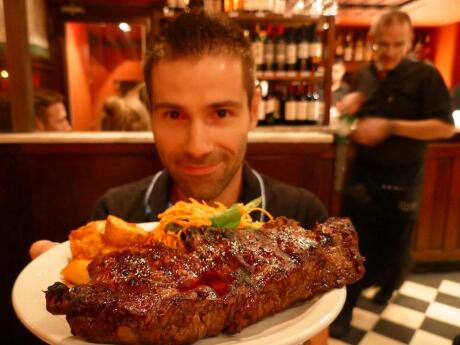
Argentinian steaks are world-famous for good reason. The country is one of only 5 in the world where there are more cows than humans (the other 4 are Uruguay, Brazil, Australia, and New Zealand). Meat is a huge part of the local diet and some of the best steak houses (called parillas) can be found in Buenos Aires and other big cities. The parilla is actually the name of the big iron grills used to cook meat in the Argentine style. Make sure you try some of the best steak cuts such as bife de chorizo (sirloin), ojo de bife (rib-eye), cuadril (rump) and entraña (flank) during your time in Argentina.
Malbec wine
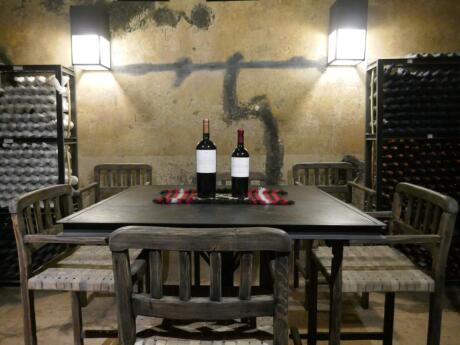
Malbec is a type of grape originally from France which didn't do so well growing over there but thrived once it was introduced to the climate of Argentina, particularly Mendoza. Nowadays, wine is even more popular than beer in Argentina, and their famous Malbecs have put them on the worldwide stage for the best wines. A glass of Malbec pairs perfectly with one of the country's excellent steaks too, so make sure you try a few varieties. Mendoza is also home to the annual wine harvest festival Vendimia in Feb/March, so keep your eyes peeled for that if you're in Argentina then.
Milanesa
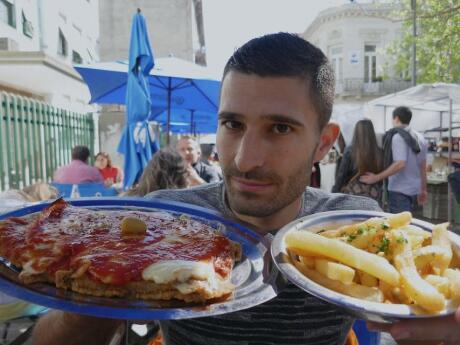
Argentina has a strong Italian culinary influence as a result of the mass emigration which occurred between 1857-1940. Some of the best Italian-inspired dishes you can try in Argentina include helado (ice cream), milanesas (breaded seasoned beef fillets), and an array of pastas, gnocchi dishes and pizzas. We especially loved the Milanesa a la Napolitana con papas fritas, which is like a beef schnitzel covered in tomato sauce, mozzarella, and ham, served with fries. It was named after the restaurant Nápoli in Buenos Aires where it was created in the late 1940s and has now become a prominent Argentinian culinary staple.
Yerba mate
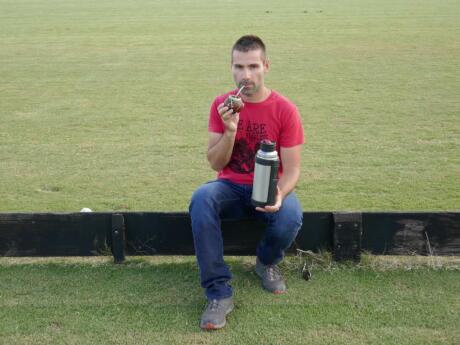
Mate (pronounced MAHteh) is the most popular drink in Argentina: it's ingrained in the culture, the focal point in social gatherings, and handed around for everyone to share. Mate is a black herbal tea made from the yerba mate herb, grown in the Northeast provinces of Misiones and Corrientes. The herb is placed in a gourd (the mate pot), hot water is added and it is then served from a metal straw (the bombilla). A common sight amongst Argentinians is holding the flask of hot water in one hand and the iconic mate gourd in the other, just like Seby is doing here.
Empanadas
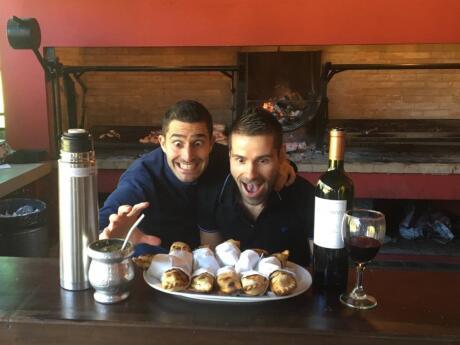
Empanadas are another tasty treat we couldn't get enough of in Argentina! Empanada comes from the Spanish word empanar, meaning “to wrap”. Empanadas are literally pastries that are wrapped around a filling, then fried or baked. Fillings can be anything from beef to chicken, ham or cheese and there’s a whole code about the correct way to fold them, depending on what the filling is. The tastiest empanadas we tried are empanadas con carne picada from Salta in Northern Argentina. This is because of the indigenous Quechua influence, which includes the use of more spices to make them picada (spicy).
Plan your trip to Argentina
We've put together some handy hints and tips to help you plan your own trip to Argentina. Read on to find out everything the gay traveler should know before they go.
Travel insurance: We've mentioned security tips for visiting Argentina (down below), but for the times when things just go wrong, that's when travel insurance comes in handy. From illness or injury, unexpected cancellations or theft we never travel without our Heymondo travel insurance ‘just in case'. We definitely recommend them to other travelers as well, for their comprehensive cover and how easy it is to make a claim online.
How to get there: Most of the major cities in Argentina are serviced by international airports so it's quite easy to travel to the country by plane. If you're already in South America there are also buses you can catch to get to Argentina from neighboring countries for a lower price than flying, although it will also be longer travel time.
Visa requirements: Travellers from most EU countries, the USA, Canada, and Australia don't need a visa to stay in Argentina for up to 90 days as a tourist. You will, however, need to show that you have a return/onward travel ticket if you arrive by plane and, of course, a passport that's valid for at least six months from when you arrive. Find out your personal visa requirements here.
Getting around: Traveling between the major cities and regions of Argentina can be done by domestic flights, buses, or by car. The country's rail system between cities is sadly a bit neglected. We found hiring a car to be a great way to travel around Argentina on our own terms.
Vaccinations: The CDC recommends that all travelers to Argentina be up to date with routine vaccinations, particularly measles. It's also a good idea to be vaccinated for Typhoid and Hepatitis A. Depending on where you are planning to travel within the country and what you might do, you may need to be vaccinated against Hepatitis B, rabies, or yellow fever as well. Make sure you check the most recent information on the CDC website.
Currency: The currency used throughout Argentina is the Argentine Peso, which is abbreviated as ARS. €1 is worth around 48.50 Argentine Pesos, £1 converts to about 52.85 pesos and $1 USD is about 43.25 pesos.
Tipping culture: Tipping is generally not expected in Argentina, although in places like hotels you may receive slightly better service if you leave a few pesos out for the staff. For things like tours, to give around 100 pesos (which is only about $2) is considered a normal amount if you found the service good. In restaurants, around 10% of your bill is the norm for good service, but again, this is optional.
Internet access: Free fast WiFi is available at most hotels, cafes, restaurants, and hostels in the major cities of Argentina, although you might need to ask for a password. If you're going to be traveling to more remote/rural areas, or just know you'll be using a lot of bandwidth then you should bring a portable WiFi device or pre-order a local Sim card online.
Online privacy: Argentina is one of the most gay-friendly countries with very progressive laws so you won't have to worry about using gay dating apps like Scruff or Grindr. If you do prefer to keep your internet activities private then we recommend ExpressVPN. Their service is both affordable and very reliable.
Accommodation: When looking for accommodation in Argentina we definitely recommend using Booking.com. They have so many great options to choose from, many places with free cancellation if needed. Their online customer service is excellent and available 24/7, plus it's super easy to book online.
Sightseeing and adventure: We also love using GetYourGuide to find all sorts of fun activities and tours within Argentina. This is another company that has a very easy-to-use online booking process and also has really good 24/7 online customer support.
When to visit: Argentina is a 365 days destination because, despite the time of year, there is always something going on. It is a huge country – the 8th largest in the world, therefore it has varied landscapes ranging from the sub-tropical in the Northeast (Iguazu Falls), desert in the center (Mendoza), the mountainous Andes along the west side, coastal along the east side, and of course, the extreme cold in Patagonia. Another thing to remember about Argentina is that although it has 4 clear seasons, they are inverted to those in Europe and North America.
Safety tips for gay travelers to Argentina
Is Argentina safe for gay travelers? The short answer is YES, but it's always smart to take precautions when traveling. Make sure you follow these safety tips and you are unlikely to encounter any problems while traveling in Argentina.
- Check official government advice before you go. I mean, this should go without saying for any kind of travel, always check what your country's official government advice is on traveling to any destination. It's also wise to make sure you register your travel plans so you can get updates while traveling.
- Although homosexuality is legal in Argentina, avoid public displays of affection outside of the gay friendly areas. In the main touristy areas and big cities, you shouldn't encounter any problems, but in the more rural or remote areas of the country, locals may still be a tad hostile.
- Just like anywhere in the world, be aware of your surroundings, especially in big cities. Traffic can be different from what you are used to and obvious tourists are always seen as the easiest pickings for thieves. But if you're paying attention to what's going on around you, you should be fine.
- Avoid excess alcohol and drug use. It's far more likely that you will be taken advantage of, scammed, or even robbed if you are intoxicated. Sure, have a few drinks and a good time, but if you're going to get wasted, it's probably better to do that in a familiar environment.
- Don't wear valuables in public. Pickpockets operate everywhere, and the flashier your belongings, the more attractive you are as a target. Leave your valuable and important items in your hotel safe so that even if you do find something missing, hopefully, it won't be anything too irreplaceable.
- Invest in a good money belt. It's always better not to carry too much cash or credit cards anyway, but having a good money belt that hides under your clothes is another way to ensure nothing goes missing.
Read more travel adventures like this in our book!
We've published our very own gay travel book called, ‘Out in the World'. It has all our practical safety tips, first-hand advice, and travel stories from some of our favorite destinations.
We hope it inspires you to have a fun and safe trip!
Click on the book to order:

For more inspiration:
- Discover more in our guide to the gay bars of Buenos Aires
- Use our guide to the best gay hotels in Buenos Aires to help you plan your trip
- Check out some of the best gay hotels in Mendoza
- Read about the best gay hotels in Córdoba to stay
- For more romantic inspiration, check out our favorite romantic things to do in Buenos Aires
- Want to up the country count during your stay? Consider a small side trip or even a day trip to neighboring Uruguay. Use our gay guide to Uruguay to help you plan.
- Another favorite LGBTQ destination of ours in South America that we recommend is the gay scene of Bogota
Like this post? Pin it
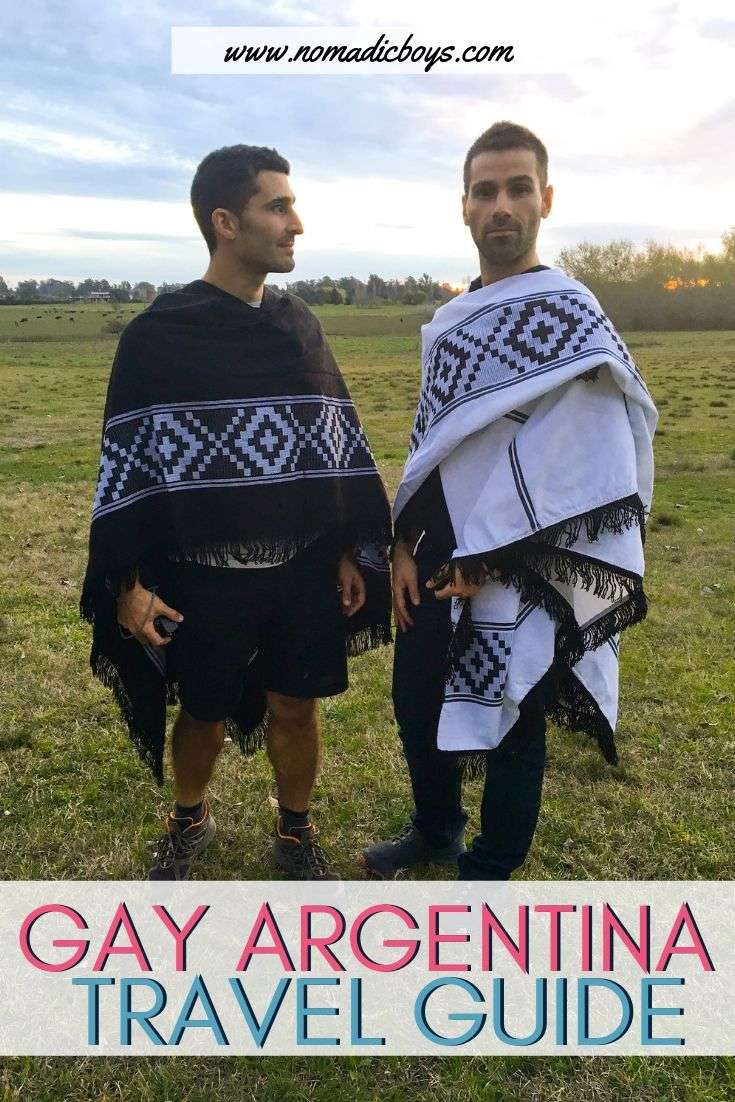

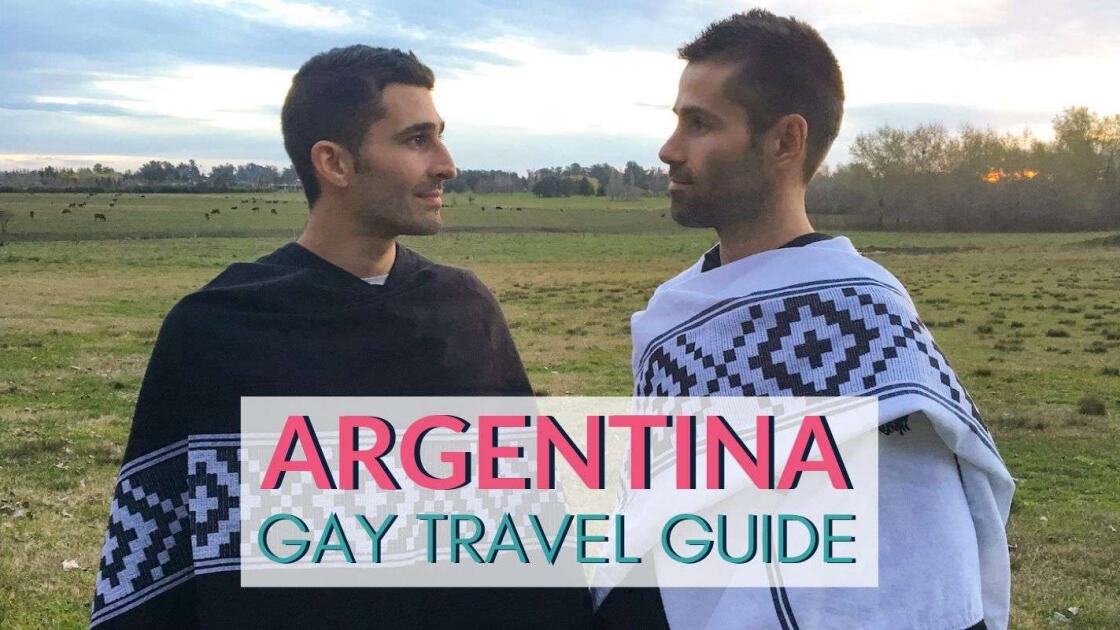
Bradley
Saturday 8th of February 2020
Excellent advice for a great country😃
Stefan Arestis
Saturday 8th of February 2020
Thank you :)
Steven Kark
Sunday 13th of October 2019
As all posts, this was excellent.
Stefan Arestis
Monday 14th of October 2019
Thanks!